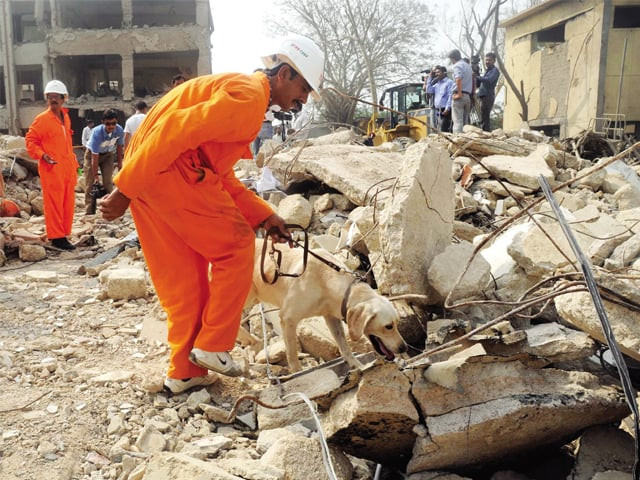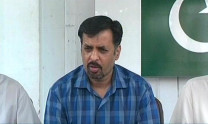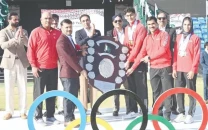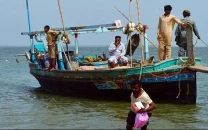A horrific ‘first response’ to discovering a body
Ambulance services' work great, but their personnel are untrained, indisciplined, lack a complete sense of moral duty.

A horrific ‘first response’ to discovering a body
The roads leading from Karachi Club were covered with shattered glass. Police had blocked the entrance at the KC intersection and it was pitch black everywhere. We walked to the site, nearly 500 metres away, and turned into the lane which led to the CID complex.
The smell of burnt gunpowder and explosive lingered in the air.
As we entered the street, the rows of ambulances, law-enforcement agency vehicles and those from the CDGK and fire department had blocked the entrance. But the real shock was yet to come. The moment we set our eyes on the CID building, I was in a state of complete awe. The level of devastation was unimaginable. As far as my eyes could see, every structure was destroyed or damaged.
The rows of concrete blocks had been tossed into the air and had landed in different directions. You couldn’t even tell what had happened to the entrance.
As shock turned to belief, we rushed ahead to where the rescue search was underway. We passed through all levels of security and entered the CID building. The crater from the blast was the most terrifying sight. It was around 15 feet, cone-shaped and nearly a third full of water haemorrhaging from a broken pipeline. The explosion was so intense that the police vans and cars had been flung into the air and had landed at a distance on top of other private vehicles. The ones that were parked had bullet holes all over.
We saw the rescue team Janbaz Pakistan putting its sniffer dog to work.
The rest of the public, plainclothed members of the CID office, a bunch of media persons and many police, scouts and rangers personnel milled about the site. The other police and a great number of private guards and plainclothes policemen accompanied individuals (some high-ranking officers) who visited from time to time and took pictures.
And then came a shout from one of the rescue personnel. “There’s a body here!” And before we knew it, 50 or so workers from Chippa, Khidmat-e-Khalq Foundation, Edhi and the Aman Foundation etc. jumped to the spot and started digging. It was madness. We wanted to assess the patient, check if he was breathing and if there were chances of saving him. But we were elbowed aside by these ambulance men. We witnessed the most gruesome fight to take the body out and cover it with one of the white sheets bearing the KKF, Edhi or Chippa names. These men pushed each other, hurled abuse and fought to gain control of the body.
The media caused more confusion and havoc. Cameramen poured into the site to get a first glimpse of the retrieved body. These men also pushed away the rescue workers from another organisation who were trained and equipped. They pushed to get the best spots for their cameras and not once cared to act responsibly. We tried to make our way through, but were pushed back every time. We shouted at them to allow us to assess and rescue the person, but somehow these ambulance men knew he was dead. It is safe to say that even if the victim were alive, he would have stood a slim chance of surviving after being manhandled amid a complete lack of safety protocols. This battle for the body continued till it was taken to the ambulance.
This brings me to why I am writing this. The ambulance services are doing a commendable job in their own capacity, but their personnel are untrained, indisciplined and they lack a complete sense of moral duty. I had never imagined it would get down to such an inhuman battle to score the highest number of bodies.
Surely this manpower and enthusiasm can be channeled more productively. If these young, daring men could be taught the principles of First Response, Triage, Basic Life support and team work, we could be looking at very efficient Disaster Management. But who is willing to do it? Morality is overshadowed by scoring; reporting is taken over by commercialism. As part of the healthcare community and as a Certified First Responders, we are willing to train people to manage such situations. The question is are you?
The writer is a 4th year MBBS student and a Certified First Responder
Published in The Express Tribune, November 13th, 2010.



















COMMENTS
Comments are moderated and generally will be posted if they are on-topic and not abusive.
For more information, please see our Comments FAQ